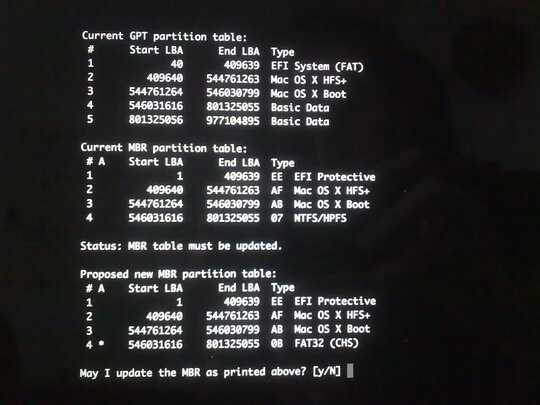0
I was happily using bootcamp on my mac to run Windows 7. I then decided to create a shared exFAT partition on the drive as well to share files between the systems. After I did this, windows won't boot anymore ("no bootable device - insert boot disk and press a key").
Searching around, refit seems to be a program that can fix it. However I have wrecked computers before messing with MBR tables and the like, so if anyone can confirm the method of repairing this or validating this input I would appreciate it.
It seems you can fix the problem by using refit. When booting, I select the partition tool. It prompts me with this:
Does this look correct? I'm kinda worried about it not showing the NTFS partition at the new MBR table, however the start and end lba's match the NTFS one.
Also, can I uninstall refit after fixing the boot tables?
Added info
The Mac is the newest model with a single SSD disk. OSx is 10.8 and Windows 7. There's a Mac OSx partition, then a shared exfat partition (130 gb) and a NTFS partition (90 gb)
Update
I tried doing the sync. It ended up not doing much, except removing the previous message, leaving me with a blank screen and a cursor when i try to boot windows. Would a reinstall of the bootcamp windows 7 fix the problem? I wont mind really. I also tried booting from a windows 7 usb disk to try and repair the install, however it was not able to find any valid windows 7 installations.

The first thing I would do is repair the Windows 7 boot manager. If your unable to do that then your limited to installing Windows 7 again. – Ramhound – 2013-12-12T14:21:49.323
Yes that was impossible. I've erased everything and about to start over again. It seems there can only be X amount of partitions on a drive, and the data partition exceeds by one. Not sure how this is possible to circumvent, without erasing the recovery partition eg. – Shaggi – 2013-12-12T17:05:53.253